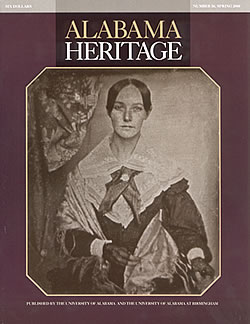|
On the cover: Sarah Ann Mason Martin, 1840, in the first daguerreotype taken in the Southeastern United States. (Courtesy Alabama Department of Archives and History)
|
FEATURE ABSTRACTS
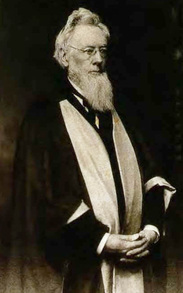 F.A.P. Barnard
F.A.P. Barnard(William Stanley Hoole
Special Collections Library,
University of Alabama)
The Extraordinary Frederick Augustus Porter Barnard
By Robert Mellown and Gene Byrd
Former University of Alabama alumnus and president William R. Smith remembered one of his favorite professors at the university, F. A. P. Barnard, as "a marvel of intellectual brilliancy and practical versatility. He was conceded to be the best at whatever he attempted to do; he could turn the best sonnet, write the best love story, take the best daguerreotype picture, charm the most women, catch the most trout, and calculate the most undoubted almanac." Barnard’s reputation as a renaissance man was well deserved, and his contributions to academia and the natural sciences in the nineteenth- century south were enormous. Robert Mellown and Gene Byrd chronicle two of Barnard’s many interests -- daguerreotypy and astronomy -- and the accomplishments he made in those respective fields.s
By Robert Mellown and Gene Byrd
Former University of Alabama alumnus and president William R. Smith remembered one of his favorite professors at the university, F. A. P. Barnard, as "a marvel of intellectual brilliancy and practical versatility. He was conceded to be the best at whatever he attempted to do; he could turn the best sonnet, write the best love story, take the best daguerreotype picture, charm the most women, catch the most trout, and calculate the most undoubted almanac." Barnard’s reputation as a renaissance man was well deserved, and his contributions to academia and the natural sciences in the nineteenth- century south were enormous. Robert Mellown and Gene Byrd chronicle two of Barnard’s many interests -- daguerreotypy and astronomy -- and the accomplishments he made in those respective fields.s
This special section is divided into two features:
- "F.A.P. Barnard and Early Photography in Alabama" by Robert O. Mellown. Improving on the 1839 invention of Louis-Jacques Daguerre, F.A.P. Barnard and his associate, Dr. William Harrington, took perhaps the first commercial photograph ever taken in the Southeastern United States. The year was 1840.
- "F.A.P. Barnard" and Astronomy in the Antebellum South" by Gene G. Byrd. Guided by Barnard, the University of Alabama became a pioneer in the advancement of astronomical research, a position the institution held for almost two decades until the Civil War brought that promising era to an end.
Additional Information
For more information on early Alabama daguerreotypy and photography, see:
About the Authors
Robert Mellown, a professor of art history at the University of Alabama and an authority on Alabama art and architecture, is a frequent contributor to Alabama Heritage. He is also editor of the magazine's Art in the South column. Gene Byrd has been a professor of astronomy at the University of Alabama since 1974. His research interests include theoretical studies of the dynamics of galaxies and the properties of groups and clusters of galaxies. Byrd has also published articles on useful devices and techniques for teaching astronomy. He may be contacted via e-mail.
For more information on early Alabama daguerreotypy and photography, see:
- Mellown, Robert O. "Early Photography, F.A.P. Barnard, and the University of Alabama," The Alabama Review January 1984, pp. 22-33.
- Rinehart, Floyd and Marion Rinehart. The American Daguerreotype (University of Georgia Press, 1981).
- Robb, Frances Osborn. '"Engraved by the Sun beams,' Alabama Photographs, 1840-1920." Made in Alabama: A State Legacy, ed. by Bryding Adams (Birmingham Museum of Art, 1995).
- Smith, M.D. and M.L. Tucker. Photography in New Orleans, the Early Years, 1840-1865 (LSU Press, 1982).
- Byrd, Gene and Robert Mellown, "F.A. P. Barnard and Alabama's First Observatory." Journal of the Alabama Academy of Science, vol. 57, no. l (January 1986 pp. 39-44).
- ___ , "An Antebellum Observatory in Alabama," Sky and Telescope February 1983 pp. 113-115.
- Chute, William J. Damn Yankee!: The Fikm Career of Frederick A. P. Barnard, Educator, Scientist, Idealist (Kennikat Press, 1978).
- Fulton, John. Memoirs of Frederick A. P. Barnard, D.D., LL.D., L.H.D., D.C.L., Tenth President of Columbia College in the City of New York (MacMillan and Co., 1896).
About the Authors
Robert Mellown, a professor of art history at the University of Alabama and an authority on Alabama art and architecture, is a frequent contributor to Alabama Heritage. He is also editor of the magazine's Art in the South column. Gene Byrd has been a professor of astronomy at the University of Alabama since 1974. His research interests include theoretical studies of the dynamics of galaxies and the properties of groups and clusters of galaxies. Byrd has also published articles on useful devices and techniques for teaching astronomy. He may be contacted via e-mail.
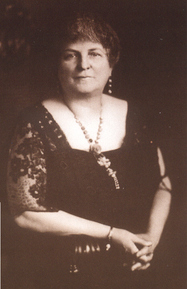 Marie Bankhead Owen
Marie Bankhead Owen(Alabama Department of
Archives and History)
How Marie Bankhead Owen Almost Killed the WPA Guide to Alabama
By Harvey H. Jackson, III
In the spring of 1935—when the country was scraping out of its worst-ever depression and Franklin D. Roosevelt’s make-work New Deal policies were starting to take shape—the Federal Writers Project was born. When critics assailed the project designed to put unemployed writers to work, Harry Hopkins, the director of the Works Projects Administration, reportedly cut them off with a blunt, "Hell, they’ve got to eat just like other people." First, administrators set about deciding what these writers would write about. Soon the idea of individual guides to each of the states, complete with highlights of their histories and accomplishments, won favor. Hardy Jackson describes the involved—and often contentious—process administrators in Alabama went through to develop the state’s version of the project.
Additional Information
Multimedia:
Hardy Jackson, professor and head of the Department of History at Jacksonville State University, is a frequent contributor to Alabama Heritage. He is currently working on a popular history of the state. This publication of Jackson's article on Marie Bankhead Owen coincides with the spring 2000 re-release of Alabama: A Guide to the Deep South by the University of Alabama Press. For more information, contact the Press at P.O. Box 870380, Tuscaloosa, AL 35487-0380, (205) 348-5180.
By Harvey H. Jackson, III
In the spring of 1935—when the country was scraping out of its worst-ever depression and Franklin D. Roosevelt’s make-work New Deal policies were starting to take shape—the Federal Writers Project was born. When critics assailed the project designed to put unemployed writers to work, Harry Hopkins, the director of the Works Projects Administration, reportedly cut them off with a blunt, "Hell, they’ve got to eat just like other people." First, administrators set about deciding what these writers would write about. Soon the idea of individual guides to each of the states, complete with highlights of their histories and accomplishments, won favor. Hardy Jackson describes the involved—and often contentious—process administrators in Alabama went through to develop the state’s version of the project.
Additional Information
- Marie Bankhead Owen - AL Women's Hall of Fame
- American Life Histories - Manuscripts from the FWP 1936-1940
- Brown, James Seay, Jr. Up Before Daylight: Life Histories from the Alabama Writers' Project, 1938-1939 (University of Alabama Press, 1982).
- Penkower, Monty. The Federal Writers' Project: A Study in Government Patronage of the Arts (University of Illinois Press, 1977).
- Mangione, Jerry Mangione. The Dream and the Deal (Little, Brown & Co., 1972).
Multimedia:
- Director Marie Bankhead Owen
- Marie Bankhead Owen
- Marie Bankhead ca. 1893
- The Owen Family
- Thomas Mcadory Owen
Hardy Jackson, professor and head of the Department of History at Jacksonville State University, is a frequent contributor to Alabama Heritage. He is currently working on a popular history of the state. This publication of Jackson's article on Marie Bankhead Owen coincides with the spring 2000 re-release of Alabama: A Guide to the Deep South by the University of Alabama Press. For more information, contact the Press at P.O. Box 870380, Tuscaloosa, AL 35487-0380, (205) 348-5180.
Daniel Cram’s Sketches of the Mexican War
By John McCall, with T.J. Beitelman
In the summer of 1847, young Lt. Daniel Houston Cram of New Hampshire stepped onto Mexican soil and into one of the most important—but often neglected—conflicts of the nineteenth century. During the Mexican War, fourteen thousand American soldiers lost their lives—as did many more Mexicans—fighting over the land that would eventually become the American southwest. Cram not only saw it firsthand as a participant, he stole moments to sketch some of the more dramatic scenes in a notebook that has been passed down through generations of his family. John McCall, assisted by T.J. Beitelman, tells the story of Cram’s Mexican War experiences, complete with photographs and detailed descriptions of the sketches themselves.
Additional Information:
About the Authors
John McCall, a graduate of the University of Alabama School of Law and currently an associate with the Montgomery law firm Rushton, Stakely, Johnston & Garrett, is the great-great-great-grandson of Daniel Houston Cram. His mother, Mrs. Doy Leale McCall, Jr., (Margaret Thorington Kohn) of Montgomery, is the current owner of Cram's sketchbook, which she inherited from her aunt, Mary Virginia Kohn. Kohn received the he irloom from her mother, Mrs. John Peter Kohn (Clementina Rebecca Cram)-the daughter of Daniel Houston Cram. Although many of the sketches have become unattached through time, the notebook and its contents remain in good condition.
T. J. Beitelman, Editorial Assistant at Alabama Heritage, is a graduate student in creative writing at the University of Alabama.
By John McCall, with T.J. Beitelman
In the summer of 1847, young Lt. Daniel Houston Cram of New Hampshire stepped onto Mexican soil and into one of the most important—but often neglected—conflicts of the nineteenth century. During the Mexican War, fourteen thousand American soldiers lost their lives—as did many more Mexicans—fighting over the land that would eventually become the American southwest. Cram not only saw it firsthand as a participant, he stole moments to sketch some of the more dramatic scenes in a notebook that has been passed down through generations of his family. John McCall, assisted by T.J. Beitelman, tells the story of Cram’s Mexican War experiences, complete with photographs and detailed descriptions of the sketches themselves.
Additional Information:
- The US-Mexican War - by the Descendants of Mexican War Veterans
- Bauer, K. Jack. The Mexican War 1846-1848 (University of Nebraska Press, 1974).
- Christensen, Carol and Thomas Christensen. The U.S-Mexican War, Companion to the Public Television Series "The U.S -Mexican War, 1846-1848" (Bay Books, 1998).
- Moseley, Edward H. and Paul C. Clark, Jr. Historical Dictionary of the United States-Mexican War (The Scarecrow Press, Inc., 1997).
About the Authors
John McCall, a graduate of the University of Alabama School of Law and currently an associate with the Montgomery law firm Rushton, Stakely, Johnston & Garrett, is the great-great-great-grandson of Daniel Houston Cram. His mother, Mrs. Doy Leale McCall, Jr., (Margaret Thorington Kohn) of Montgomery, is the current owner of Cram's sketchbook, which she inherited from her aunt, Mary Virginia Kohn. Kohn received the he irloom from her mother, Mrs. John Peter Kohn (Clementina Rebecca Cram)-the daughter of Daniel Houston Cram. Although many of the sketches have become unattached through time, the notebook and its contents remain in good condition.
T. J. Beitelman, Editorial Assistant at Alabama Heritage, is a graduate student in creative writing at the University of Alabama.
DEPARTMENT ABSTRACTS
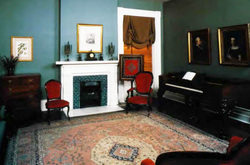 The Humphreys-Rogers House
The Humphreys-Rogers Housereopened in April 1999 as
the Decorative Arts Center for Alabama
(EarlyWorks Museum, Huntsville)
Southern Architecture
History on the Move: The Evolution of the Humphreys-Rodgers House, c. 1848
By Christopher Lang
In 1991 the 330-ton Humphreys-Rogers house, a historic brick mansion in Huntsville, made an astonishing half-mile journey from its original site to the EarlyWorks Museum in downtown Huntsville. The move was only the most recent in a long process of remodeling and preservation stretching back to its construction in 1848. Now fully restored, the building houses period room-settings and special exhibits on the decorative arts.
Additional Information
The following items in the Encyclopedia of Alabama will also be of interest:
About the Author
Christopher Lang is Curator of Collections and Exhibits at the EarlyWorks Museum and master cabinetmaker at Alabama Constitution Village, Huntsville. Prior to coming to Alabama, he worked at Colonial Williamsburg, Virginia.
History on the Move: The Evolution of the Humphreys-Rodgers House, c. 1848
By Christopher Lang
In 1991 the 330-ton Humphreys-Rogers house, a historic brick mansion in Huntsville, made an astonishing half-mile journey from its original site to the EarlyWorks Museum in downtown Huntsville. The move was only the most recent in a long process of remodeling and preservation stretching back to its construction in 1848. Now fully restored, the building houses period room-settings and special exhibits on the decorative arts.
Additional Information
The following items in the Encyclopedia of Alabama will also be of interest:
About the Author
Christopher Lang is Curator of Collections and Exhibits at the EarlyWorks Museum and master cabinetmaker at Alabama Constitution Village, Huntsville. Prior to coming to Alabama, he worked at Colonial Williamsburg, Virginia.
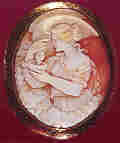 (Alexaner Ingram;
(Alexaner Ingram;Rickey Yanaura)
Recollections
The Travels of a Cameo
By Alexander Ingram
In 1835, descendants of the Aylett family moved from Virginia to Alabama, bringing with them a large, heavy cameo. Over the years, this cameo has survived a civil war, two world wars, and numerous relocations--and its story is far from over.
About the Author
Alexander Ingram is a retired radio writer living in Tuscaloosa, Alabama.
The Travels of a Cameo
By Alexander Ingram
In 1835, descendants of the Aylett family moved from Virginia to Alabama, bringing with them a large, heavy cameo. Over the years, this cameo has survived a civil war, two world wars, and numerous relocations--and its story is far from over.
About the Author
Alexander Ingram is a retired radio writer living in Tuscaloosa, Alabama.
